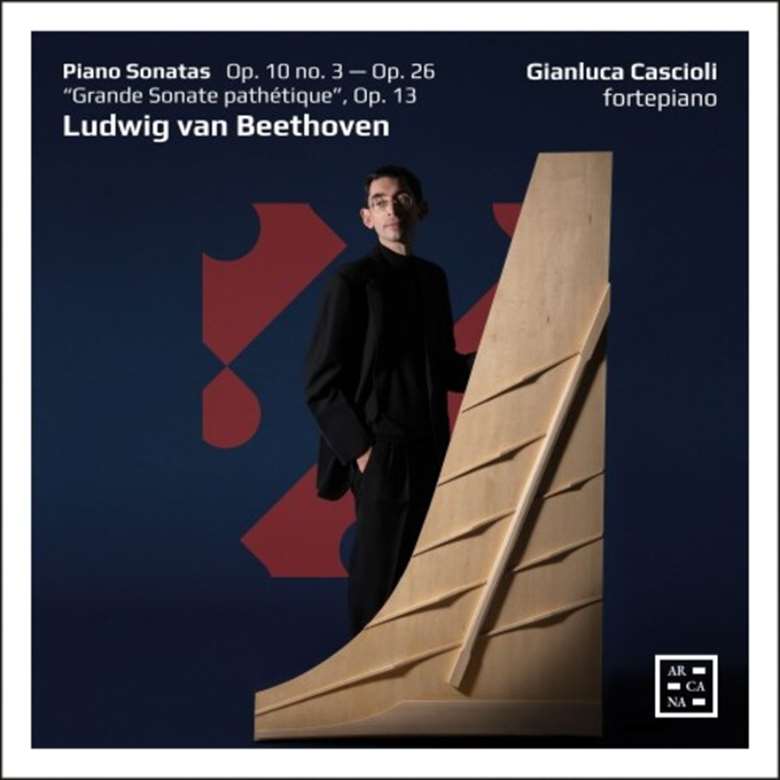Beethoven: Piano Sonatas – No 7, Op 10 No 3; No 8, ‘Pathétique’, Op 13; No 12, ‘Marche funèbre’, Op 26. Rondo, Op 51 No 1 (Gianluca Cascioli)
Michelle Assay
Friday, March 8, 2024
He’s the Peter Sellers of pianists: untameable original if you get on his wavelength, merely wilful if you don’t

Gianluca Cascioli is one of those pianists whose name is often accompanied by the adjective ‘interesting’ – that thoroughly ambiguous word that can mean anything from polite dismissal to wholehearted approval. Based on his latest Beethoven disc, his first solo endeavour on a fortepiano, I am firmly at the enthusiastic end of the spectrum. This is simply some of the most effervescent, creative and invigorating piano-playing I have heard in a long time; just sample a few seconds from the Rondo movement of the Pathétique if you are sceptical. The disc restores trust that there is still something new to be said about Beethoven, without the help of extraneous concepts or far-fetched themes.
So what is it about Cascioli that is so divisive? If I had to think of an actor-equivalent, I’d probably say he’s the Peter Sellers of pianists: untameable original if you get on his wavelength, merely wilful if you don’t. It’s no surprise that he is also a composer; there is a constant sense of renewal and spontaneity to his playing. It’s there when he is exploring the most intimate depths of the Op 10 No 3 slow movement; and it’s there when he dares to be shockingly harsh in the peremptory contrasting chords of the same movement or in the stark contrasts of the Funeral March of Op 26. Most thrilling, for me, yet possibly the most off-putting thing for others, are the witty improvisations he allows himself on notated pauses.
As with his previous recordings, Cascioli bases his audacious interventions on close historical study. The CD booklet, in the form of an intellectual chat between him and Beethoven researcher Gabriele Riccobono, samples some of the ideas and sources (especially Czerny’s writings) that have informed his interpretations and his choice of instrument: a 2009 copy of an 1805 Walter, slightly more ‘modern’ yet perfectly adapted to a repertoire composed entirely between 1796 and 1802. Cascioli exploits all the possibilities of this deceptively modest instrument. Compare, for example, the use of the ‘moderator’ versus the una corda in the middle section of Pathétique Sonata’s slow movement. Nor is he faint-hearted about rubato and fluctuating tempos when the music’s affects call for it, as at the opening of the Pathétique and in the descending scales later on in the movement, which are a strong candidate for the provenance of the soundtrack to the TV series Succession.
On the modern piano, Beethoven’s music is very much at home. But perhaps maybe too cosily so. On the fortepiano, in Cascioli’s hands, it can feel on the edge, as though railing against the confines of the instrument. If we needed any reminder of the mightiness of early Beethoven, this would do the trick.
This review originally appeared in the Spring 2024 issue of International Piano. Never miss an issue – subscribe today












